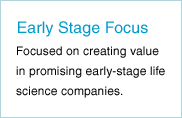
|
Investments: Valuation Policy
The PHV investment portfolio and other assets will be valued periodically, including as of December 31 and June 30 of each year and as of any required Additional Closing Date. The valuations will be used to prepare the Fund's semi-annual financial statements. Investments will be stated at fair value as determined by the General Partner and the Advisory Board, subject to the following guidelines (based on the March 2007 PEIGG Guidelines):
"These Guidelines seek to have all investments in portfolio companies reported at fair value on a consistent, transparent and prudent basis. Fair value as defined in accordance with GAAP is, "the price that would be received to sell an asset or paid to transfer a liability in an orderly transaction between market participants at the measurement date" (FASB Statement 157, paragraph 5). The objective is to estimate the exchange price at which hypothetical willing marketplace participants would agree to transact in the principal market, or lacking a principal market, the most advantageous market. No matter which market is deemed most appropriate, fair value is the estimated "exit price" in that market. (PEIGG Guideline.)
Publicly traded securities, with an active market, will be valued at the closing price on the date of valuation, subject to a possible discount based on Restrictions. (Volume ownership tests no longer apply.)
- A public security that is Restricted will be discounted between 1% and 2% per month; based on market related risks and knowledge of the Company; applied to the remaining months of the Restriction.
- Non-active public securities will need to be valued using methods suggested for Non-public entities.
R & D Phase Companies - Non-publicly traded securities, including credit instruments (convertible or not), will be valued at cost (plus accrued interest) unless circumstances support a different valuation or another valuation method. The following methods can be applied to each investment instrument separately or can be used to estimate a Firm value.
- Changes in valuation generally will be made when a subsequent financing is completed at a different valuation and such financing includes a significant investment from one or more previously uninvolved participants considered to be a sophisticated and professional investor. However, a lack of new investors does not preclude the transaction from providing an accurate valuation, if the transaction was based on an appropriate negotiation among the existing investors.
- Adjustments to the value of the round should be considered if: the transaction is between related parties; done under duress; done with a strategic buyer at an arbitrary price; or there has been a change in market conditions that do not support the new price.
- Consideration should also be given to transactions in process where the price is basically agreed to and the transaction is believed to be likely to occur.
- Consideration should also be given to Third Party Valuations.
- Changes in conditions with or without a new financing round require consideration in the valuation. These include:
- Changes in performance or the long-term financial prospects of the Company or of the individual class of
security or credit instrument.
- Market changes affecting the Company, the industry, and/or financial markets.
- Another Firm valuation consideration is to estimate the Company value based on the inputs above or on market
experience for companies of a similar nature. While it is difficult to obtain actual comparable transaction values,
there may be some expected ranges of value that management anticipates will occur as similar companies.
- An additional level of complexity exists in circumstances where an individual security's cost no longer represents the value effectively; such as when a more recent round has effectively changed the distribution rights of previous investments through preference provisions, etc., or when a restructuring has occurred. The following alternative method of valuing should be considered:
- The Liquidation Value Method which takes into account the advantages that may accrue to various preferred shareholders over other shareholders when the liquidation proceeds are shared. This calculation is to be based on the current Firm post-money valuation that was inherent in such round, adjusted as needed for current conditions. This method determines whether value should be ascribed to warrants and options.
Revenue producing Companies - Non-publicly traded securities, including credit instruments (convertible or not), will be valued at cost (plus accrued interest) unless circumstances support a different valuation or another valuation method.
Changes in valuation will be considered for all the same circumstances noted above, plus, changes in valuation should consider market parameters such as:
- Performance Multiples.
- Comparable companies transaction values or Public valuations. (If Public company valuations are considered as the basis of the valuation, a discount may be applied for Private companies.)
- Industry Valuation Benchmarks.
Investments made by the Fund, by their nature, will generally be long-term investments that are not intended to be liquidated on a short-term basis. Accordingly, valuations by the General Partner and Advisory Board will not necessarily represent the amount that might be realized from sales or other dispositions of investments. Valuations will not be adjusted on account of taxes or other expenses that might be incurred upon disposition. Debt will be valued in combination with any equity investments in the same portfolio company.
The foregoing valuations may be modified by the General Partner if and to the extent that it shall determine that such modifications are advisable in order to reflect any other factors affecting the value of investments.
« Return to the Investments page
© Pacific Horizon Ventures, 2012.
|
|